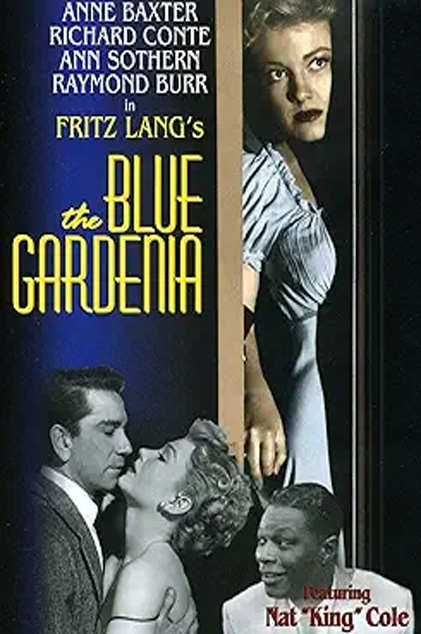In the realm of classic film noir, The Blue Gardenia stands out as a compelling narrative that intertwines personal tragedy with the pervasive influence of mass media. Directed by the legendary Fritz Lang, this 1953 film delves into themes of heartbreak, societal judgment, and the relentless pursuit of sensationalism by the press.
Plot Overview
Norah Larkin (Anne Baxter) is a telephone operator in Los Angeles, eagerly awaiting the return of her fiancé from the Korean War. Her world shatters upon receiving a letter in which he confesses to falling in love with another woman. In a state of emotional turmoil, Norah accepts a dinner invitation intended for her roommate from Harry Prebble (Raymond Burr), a charismatic but predatory artist.
Their evening at the Blue Gardenia nightclub, serenaded by the smooth vocals of Nat King Cole, leads to excessive drinking. Norah, intoxicated and vulnerable, accompanies Harry to his apartment. When he attempts to assault her, she defends herself, resulting in a violent struggle. The next morning, Norah awakens with no recollection of the events, only to learn that Harry has been murdered. With circumstantial evidence pointing towards her, she becomes entangled in a web of fear and uncertainty.
Themes and Analysis
The Blue Gardenia explores the destructive power of mass media and its capacity to shape public perception. Journalist Casey Mayo (Richard Conte) sensationalizes the murder, dubbing the unknown assailant the “Blue Gardenia Murderess.” His articles not only influence public opinion but also intensify Norah’s internal conflict and paranoia.
Lang’s direction offers a critical lens on how media can distort reality, turning personal tragedies into public spectacles. The film suggests that in the pursuit of headlines, the media often overlooks the human element, reducing individuals to mere stories.
Performances
Anne Baxter delivers a nuanced performance as Norah, capturing the essence of a woman caught between societal expectations and personal despair. Richard Conte portrays Casey Mayo with a blend of charm and opportunism, embodying the duality of a man torn between professional ambition and moral responsibility. Raymond Burr’s depiction of Harry Prebble is both alluring and menacing, serving as a catalyst for the unfolding drama.
Cinematography and Music
Cinematographer Nicholas Musuraca employs a visual style that complements the film’s somber narrative. The use of shadows and light reflects the protagonist’s inner turmoil and the overarching sense of dread. The titular song, performed by Nat King Cole, serves as a haunting refrain throughout the film, symbolizing lost innocence and the inexorable passage of time.
Critical Reception
Upon its release, The Blue Gardenia received mixed reviews. Some critics praised Lang’s direction and the film’s atmospheric tension, while others found the plot predictable. Over time, however, it has garnered appreciation for its commentary on media sensationalism and its place within the film noir genre.

The Blue Gardenia is a thought-provoking film that delves into the complexities of human emotion and the pervasive influence of media. Through its compelling narrative and strong performances, it invites viewers to reflect on the consequences of public scrutiny and the fragility of personal reputation in the face of societal judgment.